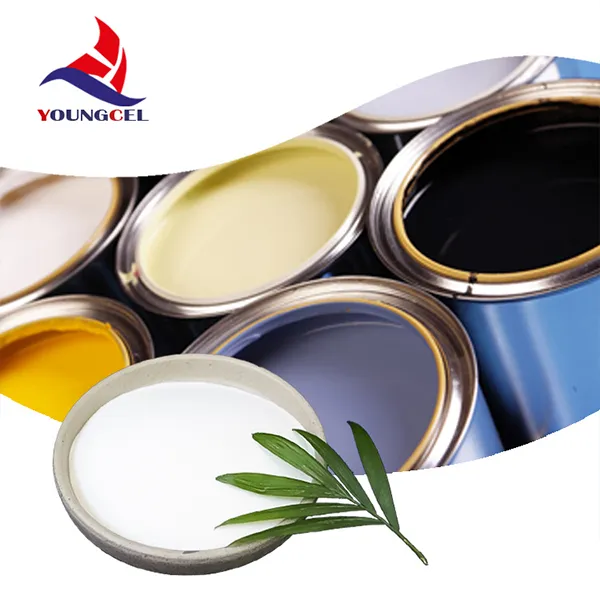Exploring the Applications of HPMC in Chemistry and Industry
Hydroxypropyl Methylcellulose (HPMC) is a versatile and widely used cellulose ether, particularly in the fields of chemistry, pharmaceuticals, food, and construction. This non-ionic polymer is derived from the natural polymer cellulose, modified to enhance its properties and expand its applications. HPMC is known for its excellent film-forming, thickening, and emulsifying properties, making it an essential ingredient in many industrial formulations.
Chemical Properties and Structure
HPMC is synthesized by the etherification of cellulose with propylene oxide and methyl chloride. The resulting polymer consists of hydroxypropyl and methoxy groups which alter its solubility and film-forming abilities. The degree of substitution and the molecular weight of HPMC can be controlled during the manufacturing process to tailor its properties for specific applications. The unique structure of HPMC allows it to dissolve in cold water, forming a viscous solution that retains its properties across a wide pH range.
Applications in Pharmaceuticals
In the pharmaceutical industry, HPMC serves multiple functions, including as a binder in tablets, a coating agent for pills, and a controlled-release agent for drug delivery systems. Its ability to form gels makes it ideal for creating sustained-release formulations, where HPMC helps to regulate the release of medication over an extended period. This property is particularly beneficial in formulations aimed at enhancing patient compliance by reducing the frequency of dosing.
Moreover, HPMC is used in eye drops and artificial tears due to its moisturizing properties. It provides lubrication and helps to keep the eyes hydrated, making it a key component in formulations aimed at alleviating symptoms of dry eye syndrome. The biocompatibility and non-toxicity of HPMC further enhance its desirability in pharmaceutical applications, ensuring safety for patients.
Role in Food Industry
chemic hpmc

HPMC has gained popularity in the food industry as a thickening agent, emulsifier, and stabilizer. It is often used in gluten-free baked goods to improve texture and moisture retention. The high viscosity of HPMC solutions contributes to the mouthfeel of food products, enhancing overall consumer experience. Additionally, HPMC acts as a fat replacer in low-fat and reduced-calorie food formulations, enabling manufacturers to create healthier products without compromising flavor or texture.
The ability of HPMC to form stable emulsions makes it an important ingredient in salad dressings, sauces, and dairy products. It helps to maintain the uniformity of these products, preventing separation and ensuring a consistent texture. Moreover, HPMC can improve the shelf life of food products by stabilizing emulsions and preventing microbial growth.
Construction and Building Materials
HPMC is widely used in the construction industry, particularly in the formulation of mortars, plasters, and tile adhesives. Its binding properties enhance the workability and adhesion of construction materials, making it easier to apply and facilitating better performance in terms of durability and strength. When added to cement-based products, HPMC improves water retention, allowing for extended open time during application and enhancing the strength of the cured material.
In addition to its use in traditional construction, HPMC is also utilized in energy-efficient building materials. Incorporating HPMC in insulation materials can improve thermal performance, contributing to sustainable building practices. This adaptability to various formulations makes HPMC an essential component in modern construction materials.
Conclusion
HPMC is a multi-functional polymer that plays a crucial role in various industries, including pharmaceuticals, food, and construction. Its unique chemical properties, versatility, and safety profile make it an invaluable ingredient in many formulations. As research and technology continue to advance, the potential applications of HPMC are likely to expand further, solidifying its significance in the science and industry landscapes. Whether improving the efficacy of medications, enhancing food products, or contributing to sustainable building practices, HPMC demonstrates its importance in today's chemical marketplace.
-
A Comprehensive Guide to Methyl Ethyl Hydroxyethyl Cellulose: Applications and Industry InsightsNewsNov.24,2025
-
Understanding Methyl 2 Hydroxyethyl Cellulose: Uses, Benefits & Industry InsightsNewsNov.24,2025
-
Hydroxyethyl Methyl Cellulose HEMC: Industrial Uses, Benefits & Future TrendsNewsNov.23,2025
-
HEMC Cellulose: Versatile & Sustainable Industrial Polymer | YoungcelNewsNov.23,2025
-
Methyl Hydroxyethyl Cellulose: Versatile Building Block for Industry & SustainabilityNewsNov.23,2025
-
CAS 9032 42 2: Understanding Polyvinyl Alcohol's Impact on Industry & SustainabilityNewsNov.22,2025




